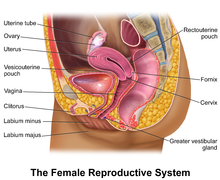
Charity begins at home, you start today, your neighbor starts tomorrow
and the whole city starts doing this sooner than you realize, how about
that? No, I can’t be that optimistic; but what’s the harm in throwing
the idea around? Are you with me?
A young man step from all of us can make a sea change in our
environment. Let our leaders sign environmental protection treaties, let
them reduce carbon emission from factories. You, you don’t keep quiet,
do something today, whatever you can and let’s make this place a better
one for our children even to our four generations.
Various ways you can help save our environment
We all pollute the environment we live in, I do, and your dog does too. It’s very much in our control to reduce this pollution.
1. Go paperless, save environment.
Sure you can’t stop advertisement leaflets coming in to your mail box
(shouldn’t there be an environmental law to ban this practice, or at
least, be made it mandatory to use recycled paper?) but, you can control
the statements, updates and notices which you get from your financial
institutions.
Select paperless as the mode of communication. Mostly all of them
support this. It’s high time that all govt. agencies implement this too.
2. Stop using bottled water. This may be very hard
for many, I understand. If it’s not that hard for you, start using
re-usable materials and fill it up every time.
3. Stop smoking. Smoking creates pollution inside of
your body and for the people around you. Even after hours of smoking,
your kids can be recipients of harmful effects of your nicotine
consumption.
The pollution caused by cigarettes does not stop in our bodies or
the air around us; it also affects the land we live on and the water
that we drink. Millions of cigarette butts are discarded on to the
ground every day“.
4. Use less electricity. There are various options
to save on electricity, I can write an entire post about this. The
easiest of the ways is to use fan instead of an AC, if you can. Air
drying clothes, letting sunlight come in the winter and blocking it in
the summer are other easy options to try out at your home.
5. Use less gas. Bike to work, car pooling are the easier options you can try. There are various other effective ways to save on gas.
6. Recycle. Don’t just throw your old electronics
and batteries to trash. Make use of local free recycling facilities.
Dispose your plastic containers as well by separating them out from
normal trash.
7. Use reusable shopping bags. It was my wife’s idea
to start using reusable bags. They are made of cloth and need cleaning
once a week. We eliminated a lot of plastics from our life this way. You
can do the same.
8. Buy fresh local produce. Whenever you have option
to buy from farmer’s market or local grocers, give it a preference.
Processed goods take a lot of energy, first for processing part and
then, the fuel consumption in transportation.
9. Save water.
Sweet water is a scarce resource and it’s being depleted at a greater
pace than earth is replenishing it. There are various ways to save water
in everyday use from fixing leaky outlets to adjusting the timers on
sprinklers.
10. Use emails and eGreetings.
Unless you are already using it, what’s preventing you from going ‘e’
route? Apart from being environment friendly, it also reduces effort
required to pass your message across.
11. Use ceramic cups. Instead of plastic, paper
or Styrofoam, the ceramic cups can be used over and over. This reduces
the impact on the environment and on your budget.
12. Print less. Unless
it’s absolutely necessary to print, refrain from doing so. When you do
have to print, consider printing on both sides of the paper.
13. Buy items with recycled materials.
For an example, you can get two types of coffee cups. One with fresh
paper and one with recycled paper. You can identify by reading the label
on the pack.
14. Reuse and re purpose.
whenever possible, re-use the containers, cartons and envelops. Oh,
your tooth-brush as well! For cleaning my sports shoes, I use old tooth
brushes, it goes in to the grooves perfectly. Here’s
30 ways to reuse bottles and containers.
15. Use energy-efficient items. In the long run they
save a lot of money and energy. Bulbs, use LED bulbs,
even fluorescent light bulbs consume 1/3rd (or lesser) of the energy
of incandescent light bulbs. For other equipments like, AC,
refrigerator, washer, etc buy Energy Star appliances.
16. Use clothes more than paper. Reduce paper usage
by using cloths to wipe your hands or the things you normally wipe with
paper towels. My home is paper towel free and I use old dresses to make
wipe cloths. Do you know something called handkerchief?
17. Use microwave. I am not sure if you can bake
cakes in a microwave. Last time I checked, my wife also didn’t know.
But, she could tell me 100′s of other dishes that can be cooked in
microwave. Use microwave more often to reduce your carbon footprints.
18. Leak proof your home. Ensure
you are not losing warmth or cool through leakages, by having your home
properly insulated and window and door seals checked. By doing so, you
are saving energy and money.
19. Replace air filters. AC air filters for your home and car, if replaced regularly, can save a lot of energy which in turn can save you money.
20. Consume less. This is for your financial good as
well. Live simply, use your furnitures and clothes until they can’t be
used any more. If possible, check out used items on Craigslist or garage
sales.
Steps to absorb pollution
21. Plant trees. Your garden/patio or balcony, do
you have space anywhere? Grow plants, grow flowers, and attract honey
bees wherever you find a place for a pot. If you have a garden, you can
go on a green mission by planting as many trees as your yard or garden
permits. A good-looking home and better place to live, for sure!
22. Donate to organizations that help planting more
trees and work towards a better planet. I am a member of Fairchild
Botanical Garden, here in Miami, FL. My membership dues go to green
causes.
23. Pickup and deposit pollutants. Whether at home,
at work, at local super market or while running or jogging, if you find a
pollutant like plastic or Styrofoam on your way, pick it up and put in a
nearby trash bin.
24. Volunteer in anti-pollution drives. Many cities
here in south Florida organize periodic beach cleaning events. Thousands
of volunteers donate their time towards these large-scale environmental
cleaning events. Check in your local area for opportunities like this.
25. Have indoor plants. Indoor plants and aquatic
plants (in aquariums) are very efficient in cleaning the inside air
pollution of our homes. Think about it, by spending a little money to
green up our homes we are improving our health as well. In the long run,
these efforts should pay off in terms of better health.
26. Drive a clean car If vehicle emission check is
not mandatory in your state, you may still go for one. If there’s a
problem it can be fixed. Another way to contribute in similar way is to
report smoke emitting vehicles. On searching your local DMV or city
website, you may locate to report a violation.
27. Make better use of your recycle garbage bin. If
possible have two different trash cans at your home. Sometimes not all
recyclable materials are pout in to recycle bin. Even if you can save
one piece of paper from being dumped without getting recycled, you have
contributed to the environmental protection.
28. Buy local items. Specifically local food items require less transportation. Thus consuming food grown locally actually reduces gas usage.
I hope you enjoyed this article and you’ll start practicing a
technique or two in your daily routine. If not majority of the steps,
you can easily follow a few. If you are willing to follow all 25, you
deserve a good hug from me!
I know, only a few of us practicing green living won’t change
the environment around us. Still, I would like to wake up to a tomorrow
where earth is cleaner and environment is safer to live. I dream on…













